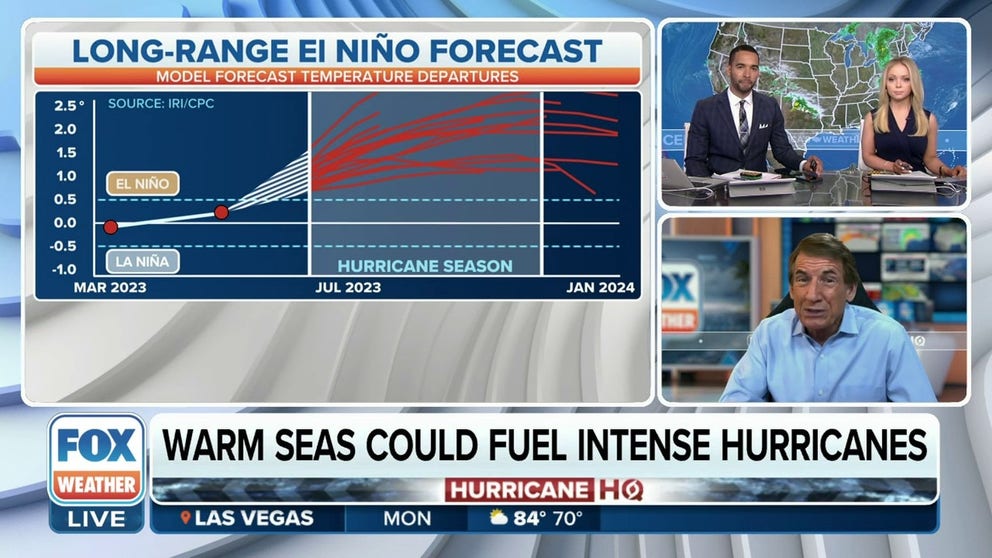What to expect in the tropics as hurricane season enters July
Typical formation zones tend to expand during July, with more attention being played to the western Atlantic and water east of the Lesser Antilles. Hurricane Emily holds the record for being the strongest July cyclone in the basin.
Bryan Norcross: Odds are high for strong El Niño pattern
Warm ocean temperatures could fuel intense hurricanes during the current El Niño conditions. Only a few years on record have been warmer during June.
The Atlantic hurricane season is entering its second month after what forecasters said was an unusual start to the year.
So far in 2023, four tropical cyclones have formed in the basin, including a rare January development off the Northeast coast.
None of the tropical cyclones strengthened into hurricanes, which is typical during an average season, with the first hurricane usually forming around August 11.
July is generally another slow month before the season ramps up in late summer and fall but influences such as frontal boundaries, and El Niño can dictate how busy the month can be.
Typical formation hotbed zones are in the Gulf of Mexico and western Atlantic, but forecasters will begin to pay closer attention to the warming water east of the Lesser Antilles for development.
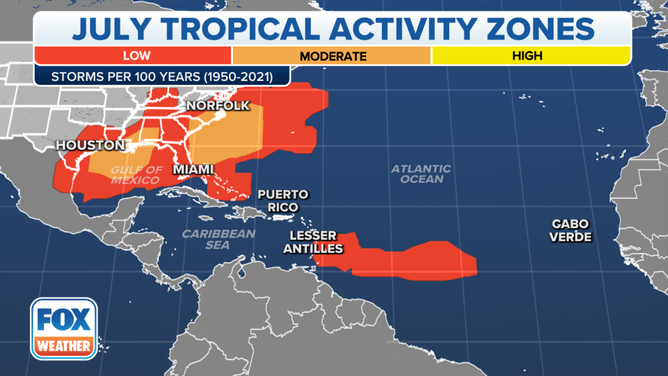
This map shows where tropical cyclone activity tends to occur during July. The data are shown as the combined number of tropical depressions, tropical storms and hurricanes whose centers pass within 125 miles of a point on the map during a 100-year period. The analysis is based on data from the 72-year period from 1950 to 2021 but normalized to 100 years.
(FOX Weather)
Regions where formations are typically hard to find include the Caribbean Sea and the eastern Atlantic. Both areas can be rather hostile, with dry air still dominant from the Saharan Air Layer. SAL is known to suppress tropical cyclone formation by reducing available moisture.
The month averages just one named storm, and the cyclone usually stays below major hurricane strength.
HERE'S WHY THE ATLANTIC HURRICANE SEASON RUNS FROM JUNE TO NOVEMBER
July 2022 was fairly active
Last hurricane season produced two named storms, more than the amount of activity in June and August combined.
Both Tropical Storm Bonnie and Colin formed on July 1 and were relatively brief cyclones in the basin.
Bonnie formed in the Caribbean Sea and impacted Nicaragua before making it into the Pacific Ocean, and Tropical Storm Colin impacted South Carolina with squally weather.
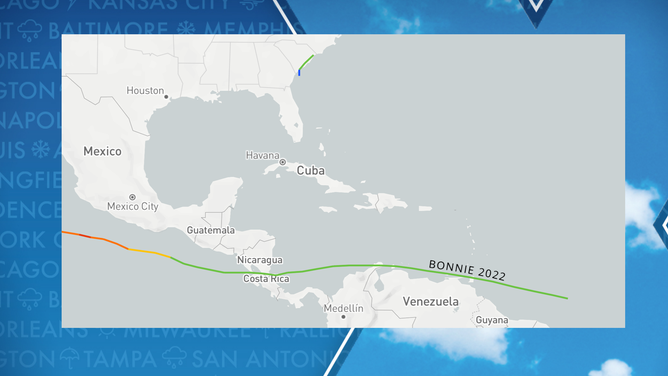
Tropical Storm Bonnie impacted Central America and Tropical Storm Colin impacted South Carolina.
Neither system reached hurricane status in the Atlantic basin, and their names will be reused in 2028.
The busier-than-normal month was not an indication that the entire year would be off to the races – the 2022 season only produced an average amount of tropical cyclone activity, with 14 named storms, eight hurricanes and only two major hurricanes.
7 FACTS TO KNOW ABOUT HURRICANES
2005 and 2020 had the busiest Julys on record
The 2005 and 2020 seasons hold the record for having the busiest July – both seasons saw five named storms in the basin.
In 2005, Cindy, Dennis, Emily, Franklin and Gert formed, leading to several landfalls in Central America and the U.S.
Hurricane Emily became the strongest cyclone ever recorded in the Atlantic basin during July. The Cabo Verde storm reached Category 5 status in the Caribbean with winds sustained winds of 160 mph before slamming into the Yucatán Peninsula.
The 2020 season featured: Edouard, Fay, Gonzalo, Hanna and Isaias. Both Hanna and Isaias became Category 1 hurricanes and impacted parts of the U.S. coastline.
HOW EL NINO, ‘FREAKISH’ WARM OCEANS FACTOR INTO HURRICANE SEASON
Early indications for July 2023
The month appears to be on track from where June left off on a quiet note across the Gulf of Mexico, the Caribbean Sea and the Atlantic Ocean.
The National Hurricane Center is not tracking any disturbances through the next week that have a high chance of development.
Water temperatures are warm across the basin, which could aid in cyclone formation in the middle and end of the month, but upper-level winds are generally more robust during El Niño seasons, which can lead to decreased activity.
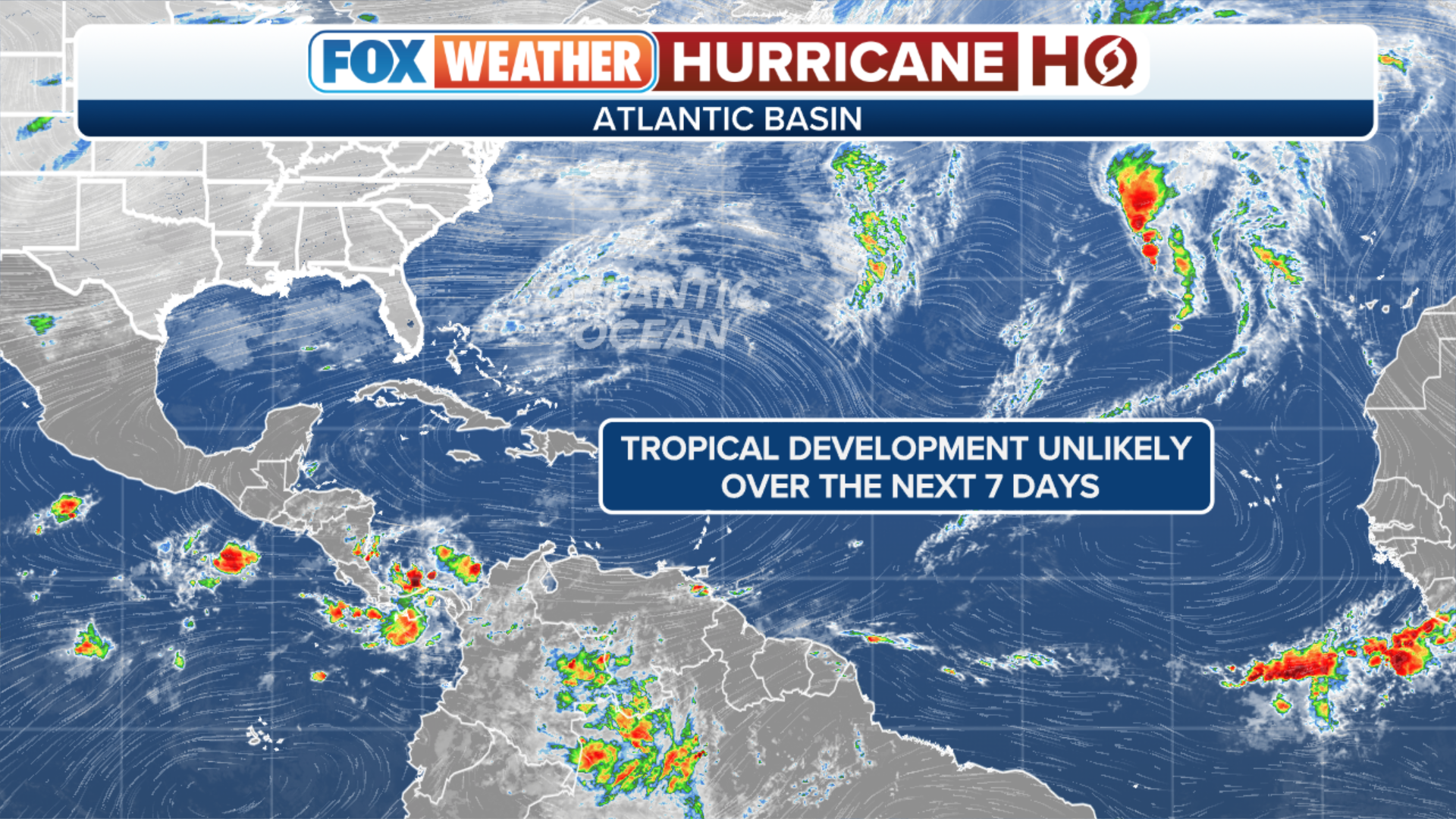
(FOX Weather)
The next cyclone that strengthens into a tropical storm will earn the name "Don."
The last time "Don" was used to name a tropical storm was in 2017, with a system that developed over the central Atlantic.
As is common with July cyclones, the 2017 version of the storm did not account for much and fell apart before impacting the Lesser Antilles.
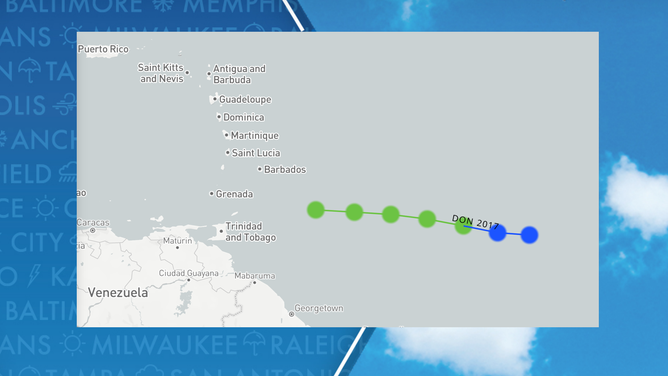
Tropical Storm Don track in 2017
(NOAA)
